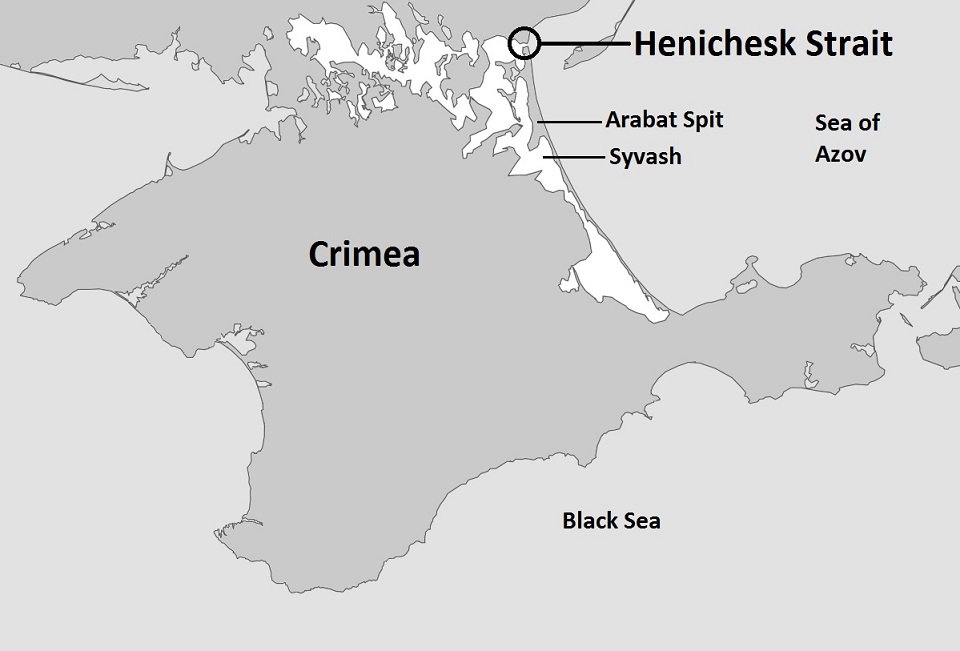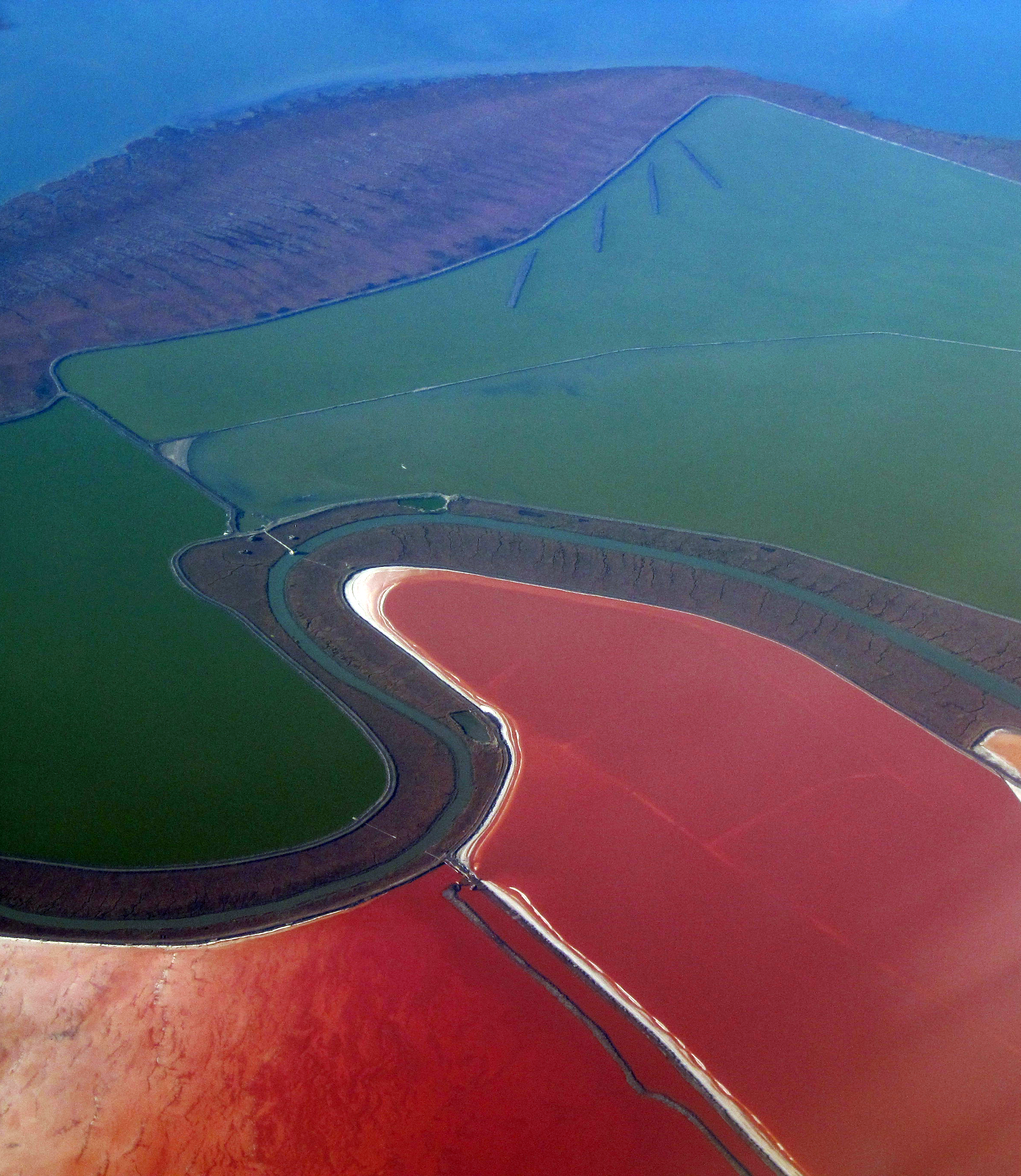|
Syvash
The Syvash or Sivash ( Russian and Ukrainian: ; , Cyrillic: Сываш, "dirt"), also known as the or (, ''Gniloye More''; , ''Hnyle More''; , Cyrillic: Чюрюк Денъиз), is a large area of shallow lagoons on the west coast of the Sea of Azov. Separated from the sea by the narrow Arabat Spit, the water of the Syvash covers an area of around and the entire area spreads over about . The Henichesk Strait is its eastern connection to the Sea of Azov. The Syvash borders the northeastern coast of the main Crimean Peninsula. Central and Eastern Syvash were registered as wetlands of Ukraine under the Ramsar Convention; however, after the 2014 Russian annexation of Crimea they became subject to a territorial dispute. Since the 2022 Russian invasion of Ukraine, the entire Syvash has been occupied by Russia. Overview The Syvash nearly cuts the Crimean Peninsula off from the mainland, serving as a natural border for its autonomous republic. The long () and narrow () Arabat ... [...More Info...] [...Related Items...] OR: [Wikipedia] [Google] [Baidu] |
Crimean Peninsula
Crimea, crh, Къырым, Qırım, grc, Κιμμερία / Ταυρική, translit=Kimmería / Taurikḗ ( ) is a peninsula in Ukraine, on the northern coast of the Black Sea, that has been occupied by Russia since 2014. It has a population of 2.4 million. The peninsula is almost entirely surrounded by the Black Sea and the smaller Sea of Azov. The Isthmus of Perekop connects the peninsula to Kherson Oblast in mainland Ukraine. To the east, the Crimean Bridge, constructed in 2018, spans the Strait of Kerch, linking the peninsula with Krasnodar Krai in Russia. The Arabat Spit, located to the northeast, is a narrow strip of land that separates the Sivash lagoons from the Sea of Azov. Across the Black Sea to the west lies Romania and to the south is Turkey. Crimea (called the Tauric Peninsula until the early modern period) has historically been at the boundary between the classical world and the steppe. Greeks colonized its southern fringe and were absorbed by the ... [...More Info...] [...Related Items...] OR: [Wikipedia] [Google] [Baidu] |
Perekop-Chongar Operation
The siege of Perekop, also known as the Perekop-Çonğar Operation, was the final battle of the Southern Front in the Russian Civil War from 7 to 17 November 1920. The White movement's stronghold on the Crimean Peninsula was protected by the Çonğar fortification system along the strategic Isthmus of Perekop and the Sıvaş, from which the Crimean Corps under General Yakov Slashchov repelled several Red Army invasion attempts in early 1920. The Southern Front of the Red Army and the Revolutionary Insurgent Army of Ukraine, under the command of Mikhail Frunze, launched an offensive on Crimea with an invasion force four-times larger than the defenders, the Russian Army under the command of General Pyotr Wrangel. Despite suffering heavy losses, the Reds broke through the fortifications, and the Whites were forced into retreat southwards. Following their defeat at the siege of Perekop, the Whites evacuated from the Crimea, dissolving the Army of Wrangel and ending the Southern ... [...More Info...] [...Related Items...] OR: [Wikipedia] [Google] [Baidu] |
Salgir
The Salhyr or Salgir ( Cyrillic: Салгир; ) is the longest river of the Crimean Peninsula. Its length is 204 km, and its drainage basin is 3,750 km². The average discharge of the water is 2 m³/s. UKRTravel. Accessed April 17, 2012. It is formed in the mountains southeast of , passes that town and flows north and increasingly east to reach the of the |
List Of Ramsar Wetlands Of International Importance
This is the list of Wetlands of International Importance as defined by the Ramsar Convention for the conservation and sustainable use of wetlands, recognizing the fundamental ecological functions of wetlands and their economic, cultural, scientific, and recreational value. The convention establishes that "wetlands should be selected for the list on account of their international significance in terms of ecology, botany, zoology, limnology or hydrology." Over the years, the Conference of the Contracting Parties has adopted more specific criteria interpreting the convention text. The Ramsar List organizes the Ramsar sites according to the contracting party that designated each to the list. Contracting parties are grouped into six "regions": Africa, Asia, Europe, Latin American and the Caribbean, North America, and Oceania. , 170 states have acceded to the convention and designated 2,471 sites to the list, covering ; two other states have acceded to the convention but have yet to d ... [...More Info...] [...Related Items...] OR: [Wikipedia] [Google] [Baidu] |
Arabat Spit
The Arabat Spit ( uk, Арабатська коса; russian: Арабатская коса) or Arabat Arrow is a barrier spit that separates the large, shallow and very salty Syvash lagoons from the Sea of Azov. The spit runs between the Henichesk Strait in the north and the north-eastern shores of Crimea in the south. Name The spit is commonly called the Arabat Arrow ( uk, Арабатська стрілка, ''Arabatska strilka''; crh, Arabat beli; russian: Арабатская стрелка, ''Arabatskaya strelka'') in Russia and Ukraine. It has been called an "arrow" since at least the middle of the 19th century. The ''Arabat'' part of the name comes from the Arabat Fortress, a 17th-century Turkish fort at the southern end of the spit. "Arabat" derives from either Arabic "rabat" meaning a "military post" or Arabic "rabad" meaning a "suburb".Arabat ... [...More Info...] [...Related Items...] OR: [Wikipedia] [Google] [Baidu] |
Chongar Strait
The Chongar Strait (russian: Чонгарский пролив; uk, Чонгарська протока) is a short, shallow, narrow strait separating the eastern and western portions of the Syvash, the shallow lagoon system separating the Crimea from the mainland east of the Isthmus of Perekop. Overview The Chongar Strait is about long, varying in width from and is less than deep. The strait separates Chongar Peninsula in the north (on the mainland of Ukraine, and containing the village of Chongar) from the Tup-Dzhankoi Peninsula in the south (in the Crimea). Two bridges cross the strait. One carries (in peacetime) the Ukrainian M18 highway (not to be confused with the Russian M18 highway), which is part of European route E105 running from northern Norway to Yalta. The other bridge is abandoned. During the Russian Civil War, the Chongar Strait was one avenue of attack during the Perekop-Chongar Operation in November 1920 and was crossed by the Soviet 30th Rifle Divisio ... [...More Info...] [...Related Items...] OR: [Wikipedia] [Google] [Baidu] |
Henichesk Strait
The Henichesk Strait (alternatively Genichesk Strait; russian: Генический пролив, uk, Генічеська протока) is a narrow strait which connects the Syvash (the shallow lagoon system separating the Crimea from the rest of Ukraine east of the Isthmus of Perekop) with the Sea of Azov. It separates the Arabat Spit from the Ukrainian mainland.Genichesk Strait article from the Great Soviet Encyclopedia, cited at The strait is about long and the width varies from , with a depth of . On account of its narrowness, it is also sometimes called Thin Strait (russian: Тонкий пролив, uk, Тонка протока). The direction of flow depends on the wind. On the north side of the strait is the town and port of Henichesk in the Ukraine. Although the strait separates the Crimea from the Ukrainian mainland geographically, it does not do so politically: both sides of the strait are in the Ukrainian Kherson Oblast, and the political and military boun ... [...More Info...] [...Related Items...] OR: [Wikipedia] [Google] [Baidu] |
Red Army
The Workers' and Peasants' Red Army (Russian language, Russian: Рабо́че-крестья́нская Кра́сная армия),) often shortened to the Red Army, was the army and air force of the Russian Soviet Federative Socialist Republic and, after 1922, the Union of Soviet Socialist Republics. The army was established in January 1918. The Bolsheviks raised an army to oppose the military confederations (especially the various groups collectively known as the White Army) of their adversaries during the Russian Civil War. Starting in February 1946, the Red Army, along with the Soviet Navy, embodied the main component of the Soviet Armed Forces; taking the official name of "Soviet Army", until its dissolution in 1991. The Red Army provided the largest land warfare, land force in the Allied victory in the European theatre of World War II, and its Soviet invasion of Manchuria, invasion of Manchuria assisted the unconditional surrender of Empire of Japan, Imperial Japan. ... [...More Info...] [...Related Items...] OR: [Wikipedia] [Google] [Baidu] |
Russian Civil War
{{Infobox military conflict , conflict = Russian Civil War , partof = the Russian Revolution and the aftermath of World War I , image = , caption = Clockwise from top left: {{flatlist, *Soldiers of the Don Army *Soldiers of the Siberian Army *Suppression of the Kronstadt rebellion *American troop in Vladivostok during the intervention *Victims of the Red Terror in Crimea *Hanging of workers in Yekaterinoslav by the Austrians *A review of Red Army troops in Moscow. , date = 7 November 1917 – 16 June 1923{{Efn, The main phase ended on 25 October 1922. Revolt against the Bolsheviks continued in Central Asia and the Far East through the 1920s and 1930s.{{cite book, last=Mawdsley, first=Evan, title=The Russian Civil War, location=New York, publisher=Pegasus Books, year=2007, isbn=9781681770093, url=https://archive.org/details/russiancivilwar00evan, url-access=registration{{rp, 3,230(5 years, 7 months and 9 day ... [...More Info...] [...Related Items...] OR: [Wikipedia] [Google] [Baidu] |
Dunaliella Salina
''Dunaliella salina'' is a type of halophile green unicellular micro-algae especially found in hypersaline environments, such as salt lakes and salt evaporation ponds. Known for its antioxidant activity because of its ability to create large amount of carotenoids, it is responsible for most of the primary production in hypersaline environments worldwide, and is also used in cosmetics and dietary supplements. History ''Dunaliella salina'' was named by Emanoil C. Teodoresco of Bucharest, Romania after its original discoverer, Michel Felix Dunal, who first scientifically reported sighting the organism in saltern evaporation ponds in Montpellier, France in 1838. He initially named the organism ''Haematococcus salinus'' and ''Protococcus''. The organism was fully described as a new, separate genus simultaneously by Teodoresco and Clara Hamburger of Heidelberg, Germany in 1905. Teodoresco was the first to publish his work, so he is generally given credit for this categorization. ... [...More Info...] [...Related Items...] OR: [Wikipedia] [Google] [Baidu] |
Solonets
Solonetz ( uk, Солонець, rus, Солоне́ц, p=səlɐˈnʲɛts) is a Reference Soil Group of the World Reference Base for Soil Resources (WRB). They have, within the upper 100 cm of the soil profile, a so-called "natric horizon" ("natrium" is the Latin term for sodium). There is a subsurface horizon (subsoil), higher in clay content than the upper horizon, that has more than 15% exchangeable sodium. The name is based on the Russian соль (sol, meaning salt). Ukrainian folk word "solontsi" means salty soil. In Ukraine there are many villages that are called Solontsі. Solonetz zones are associated with Gleysols, Solonchaks and Kastanozems. In USDA soil taxonomy, Solonetz corresponds to sodium-rich Alfisols. See also *Chott *Salt marsh *Soil salinity Soil salinity is the salt content in the soil; the process of increasing the salt content is known as salinization. Salts occur naturally within soils and water. Salination can be caused by natural processe ... [...More Info...] [...Related Items...] OR: [Wikipedia] [Google] [Baidu] |








